I need to choose a value for R1 to get the bulb shining. I was aiming to deliver 2 A current in there.
In the circuit below I am using NPN BJT transistor with beta value of 100 and built-in B-C potential value of 0.7 V.
My approach to figuring the resistance is
$$I_b=\frac{I_c}{\beta}=0.02 A$$
$$R_1=\frac{V_{CC}-V_{BE}}{I_B}=\frac{5-0.7}{0.02}=215 \Omega$$
However, in simulation, this resistance yields 1.87 A collector current.
P.S: R1 of 200 Ohms would yield 2 A collector current in simulation
Essentially, my question is why are my calculations of resistance are wrong/flawed?
